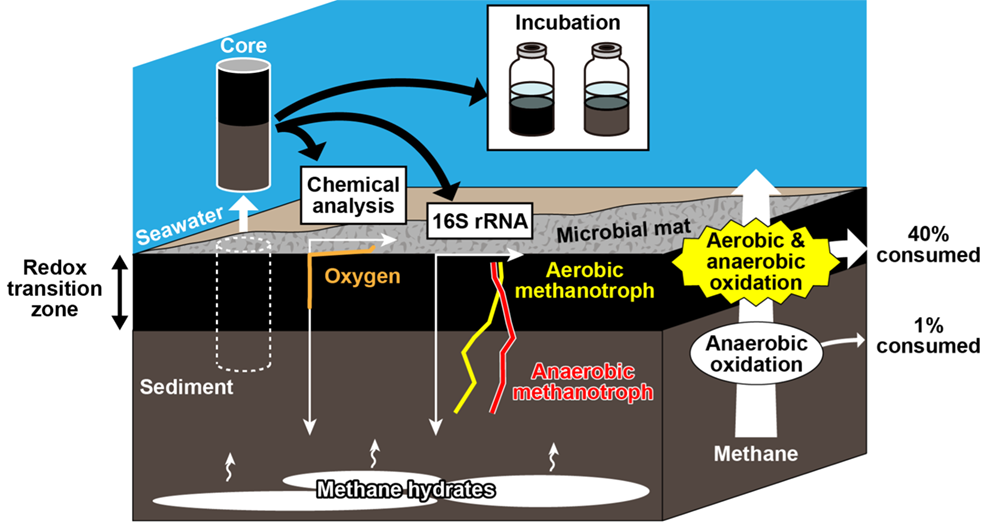Assessment of Seafloor Methane Dynamics in Methane Hydrate area: Coexistence of Aerobic and Anaerobic Methanotrophs is Key to Methane Consumption
Summary of the AIST Press Release on March 11, 2024,
>>Japanese
In 2020, the research team consisting of Yusuke Miyajima from the Geomicrobiology Research Group and Hideyoshi Yoshioka, the Fuel Resource Geology Research Group Leader at the Research Institute for Geo-Resources and Environment (National Institute of Advanced Industrial Science and Technology (AIST)), along with Masahiro Suzumura, Research Department Staff of the Environmental Management Research Institute (AIST), Tomo Aoyagi, Senior Researcher of the Environmental Ecophysiology Research Group (AIST),Tomoyuki Hori, Chief Senior Researcher of the Environmental Management Research Institute (AIST), and others investigated sediments on the seafloor covered with microbial mat off the coast of Sakata City, Yamagata Prefecture, where methane hydrates are distributed. They conducted chemical analysis, microbial analysis, and stable isotope tracer incubation to estimate the rate at which microorganisms consume methane. The researchers discovered that both aerobic (that require oxygen for growth) and anaerobic (that do not require oxygen) microorganisms coexist and consume methane in the oxidation-reduction boundary layer under the seafloor. These findings contribute to a more accurate understanding of the seafloor dynamics of methane, which is an important energy resource and greenhouse gas.
Methane seeps like those surveyed off the coast of Sakata City are observed not only in seas off the coast of Japan but also in methane hydrate distribution areas worldwide. Aerobic and anaerobic methane-consuming microorganisms may also co-occur in subseafloor sediments of other regions. Estimating the rate of microbial methane consumption in other marine areas will enable a more detailed understanding of the seafloor methane dynamics. Organic matter produced by photosynthesis on the ocean surface decomposes as it sinks as marine snow, with only a small percentage reaching the deep seafloor. Despite such a nutrition-poor environment, seafloor areas around the microbial mats discovered off the coast of Sakata City or Joetsu City often exhibit a dense concentration of large organisms such as crabs and shellfish. The reason for this is not yet clear, but research suggests that food webs consisting of microbial chemical synthesis starting from methane and hydrogen sulfide may support the ecosystem on the deep seafloor. Quantitative evaluation of the detailed microbial and chemical reaction processes in microbial mats is expected to allow for the results of this study to be utilized for evaluating the structure of deep-sea ecosystems in methane hydrate areas as well as the environmental impacts of methane hydrate exploration on the ecosystems.
Fig. 1 Methane consumption rate was estimated by geochemical and microbiological analyses and incubation experiments of subseafloor sediments. *Figure modified from Miyajima et al. (2024).


